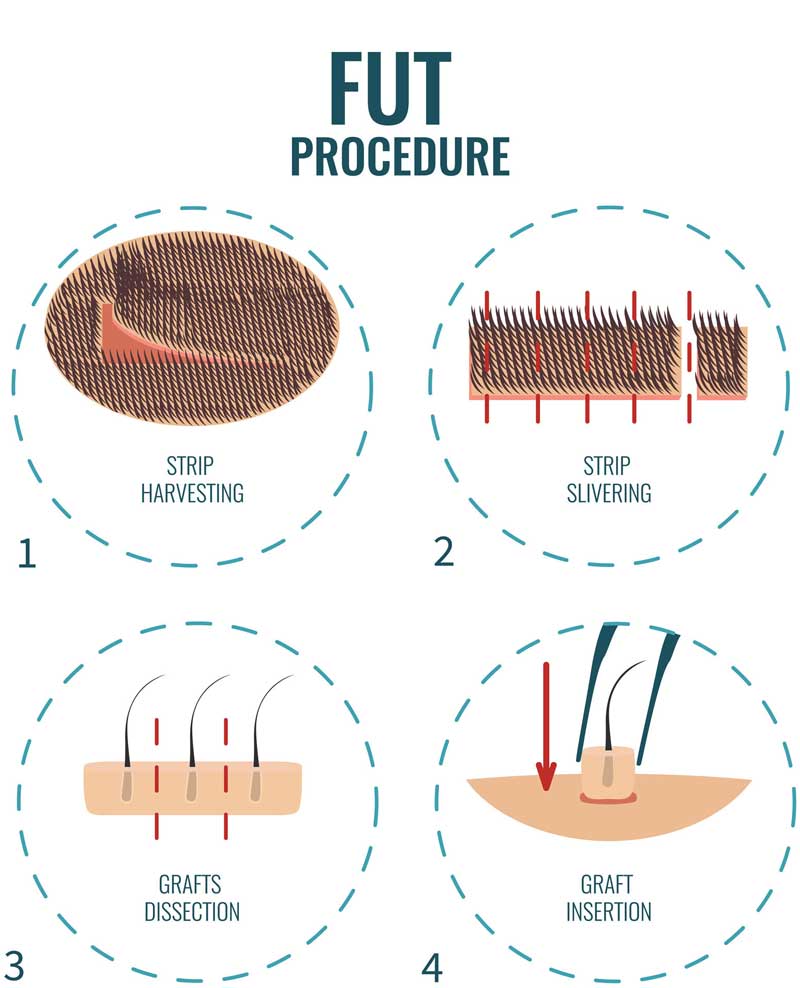The pattern hair loss could occur at any age past puberty, mostly affects the men, but women also get affected with the same with a different pattern of hair loss. The Androgenic alopecia or the hereditary hair loss genes are transferred from either parent as both mother and father are responsible for transferring the genes for hair loss. It has been found out that by the age of 30, you have a 25-30% chance of displaying balding, by age 50, 50% of men show the noticeable sign of baldness with a particular grade of Norwood grade of baldness, by age 60, about two-thirds of men either bald or have a balding pattern. However, saying that there is a particular age of baldness is not true as a patient can show the sign of baldness at any stage if suffering from the genetic baldness. And, the starting phase of triggering hair loss or baldness is defined obviously after the Puberty.
Hereditary baldness starts triggering due to the DHT-sensitivity of hair roots, especially in the areas of the top, front, crown as well as the mid-crown areas of the scalp. It has been found out that the role of male sex hormone, Androgen is at play for presenting the pattern hair loss that accelerated with the catalytic activities of an enzyme known as the 5-alpha-reductase results in the formation of DHT or Di-hydro Testosterone that causes the pattern hair loss or the Androgenic alopecia.
If a patient is suffering from the Androgenic alopecia or the pattern baldness, the only solution to treat the issue permanently is the hair transplant surgery. All over the world, the practicing of cosmetic surgeries weighs prime attention due to the cost hike and limited reputed hospitals in the cities. However, India has a top-rank position in offering quality treatment of hair transplant in Asian countries and patients from countries like Sri Lanka, Bhutan, Nepal, Afghanistan, and Bangladesh regularly visit India to get the surgery done. The hair transplant in Bangladesh is less popular compared to other Asian countries in spite of having lesser hair transplant cost in Bangladesh.
While men experience the hereditary hair loss with vertex balding or receding hairline, women generally experience the female pattern hair loss with thinning of hair over the top or crown areas of the scalp without touching the frontal hairline.
Some Noteworthy Points for Hereditary Hair loss or Baldness is jotted down below:
- Hereditary baldness or pattern hair loss occurs both men and women. For every five men with the condition where three women are also affected.
- There is no medicinal cure for hereditary hair loss except the surgical method of cure with the hair transplant procedure. However, hereditary hair loss or baldness has only one permanent solution with the hair restoration/transplantation.
- Early treatment is recommended to prevent the future hair loss. Early treatment is recommended to prevent future hair loss.
The Hair Growth Cycle and Shedding of Hair:
Like nails and skin, the hair also goes through growing and shedding and the growth cycle of hair has three stages, namely the Anagen, Telogen, and the Catagen phase.
Following are the key points for the Hair growth Cycle as follows:
- 90% of hair goes through a growing stage lasts between 2-5 years. Scalp hair grows about 1-2 cm per month. The growing phase is termed Anagen stage usually responsible for the growth of hair.
- Catagen stage or transition stage that lasts about 10-12 days in which hair follicles get shrink and detached from the dermal papilla.
- Resting phase or Telogen stage causes hair to be in a resting mode that lasts between 2-3 months. Usually, 10% of hair goes through the resting stage.
- After the resting phase, the last stage of the hair growth cycle comes with the shedding phase also known as Exogen stage in which hair shed off and replaced by new hair follicles. Approximately, 90-120 hairs fall out daily, this is considered to be normal hair shedding.
Denouement:
On the whole, we can say that the problem of hair loss is a concerning matter for both men and women and hair transplant surgery is the ultimate decision to treat pattern hair loss permanently. It can affect any age group of patient with any extent that goes severe when not treated at the right time with the right treatment option.







